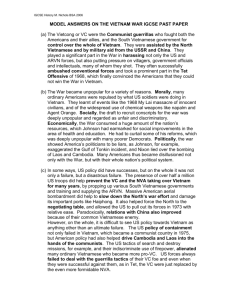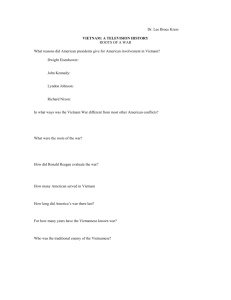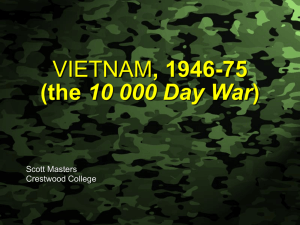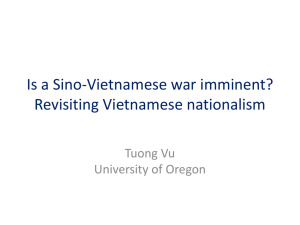Early Communist Rebellion in Vietnam
advertisement
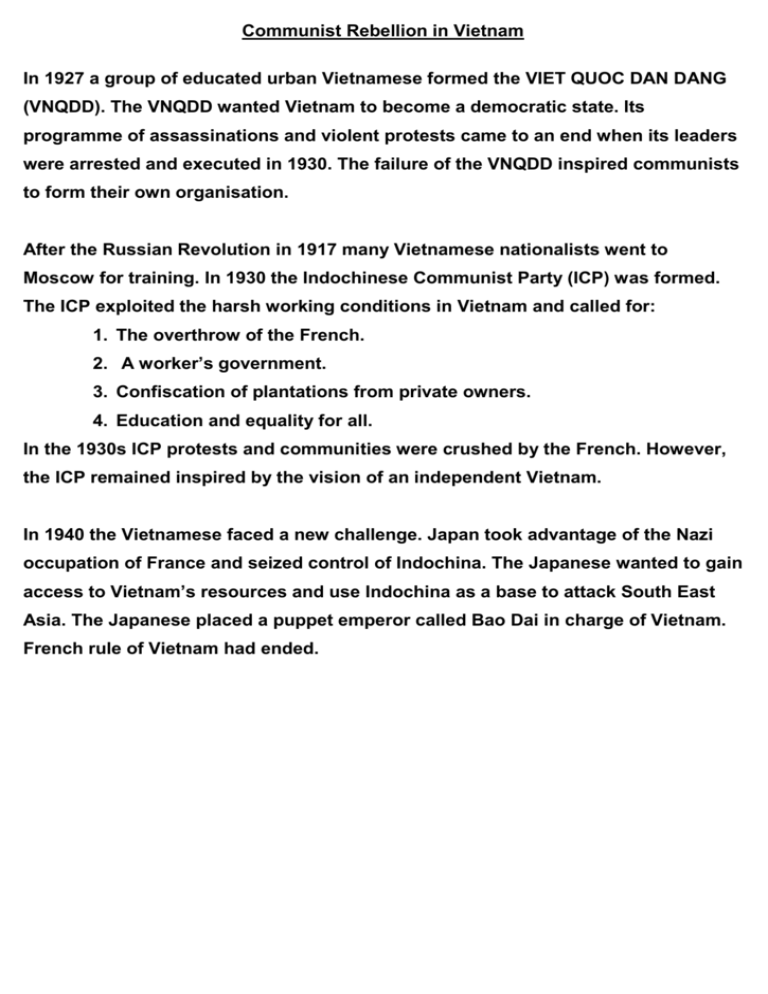
Communist Rebellion in Vietnam In 1927 a group of educated urban Vietnamese formed the VIET QUOC DAN DANG (VNQDD). The VNQDD wanted Vietnam to become a democratic state. Its programme of assassinations and violent protests came to an end when its leaders were arrested and executed in 1930. The failure of the VNQDD inspired communists to form their own organisation. After the Russian Revolution in 1917 many Vietnamese nationalists went to Moscow for training. In 1930 the Indochinese Communist Party (ICP) was formed. The ICP exploited the harsh working conditions in Vietnam and called for: 1. The overthrow of the French. 2. A worker’s government. 3. Confiscation of plantations from private owners. 4. Education and equality for all. In the 1930s ICP protests and communities were crushed by the French. However, the ICP remained inspired by the vision of an independent Vietnam. In 1940 the Vietnamese faced a new challenge. Japan took advantage of the Nazi occupation of France and seized control of Indochina. The Japanese wanted to gain access to Vietnam’s resources and use Indochina as a base to attack South East Asia. The Japanese placed a puppet emperor called Bao Dai in charge of Vietnam. French rule of Vietnam had ended.

![vietnam[1].](http://s2.studylib.net/store/data/005329784_1-42b2e9fc4f7c73463c31fd4de82c4fa3-300x300.png)


